Search Images
Browse Content (p. 1605)

Image
Female Worshipper Statue, Mesopotamia
Only the upper half of this clay statue of a naked woman has survived. It represent a worshipper. Traces of red color (original paint) can still be seen. She has an elaborate hair style and wears a 4-strand necklace and broad bracelets. Date...
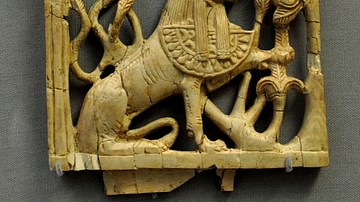
Image
Phoenician Ivory Sphinx Plaque
This ivory plaque is part of the so-called "Nimrud Ivories." The sphinx wears the typical Egyptian Pharaohs' double crown and an apron with cobra. This indicates that the plaque was made by a Phoenician craftsman. From Nimrud (ancient Kalhu...
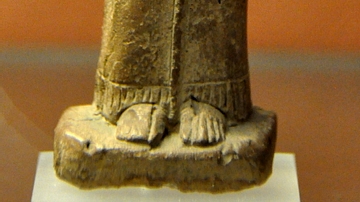
Image
Lahmu Statuette
Lahmu (also Lakhmu or Lache, which mean hairy) was a a son of Abzu and Tiamat. Lahmu was a minor protective and beneficent deity and was often associated with Ea, God of the sweet water and wisdom. From Nineveh (modern Ninawa Governorate...
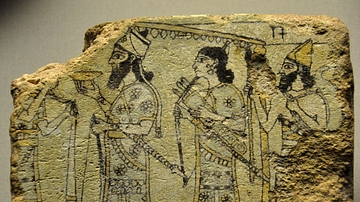
Image
Glazed Terracotta Tile from Nimrud
A close-up image of a colorful scene on a tile from Assyria which shows that the Assyrian king Ashurnasirpal II is accompanied by a bodyguard and attendants. This tile was probably part of a sequence showing the king as triumphant warrior...
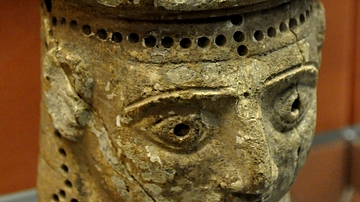
Image
A Furniture Fixture from Sharrat Niphi Temple
This limestone head of a woman was probably inlaid with colorless glass. There is a circular hole through the center of the head, by which it was probably mounted on a wooden shaft. The overall depiction of the woman's face is not fine; her...
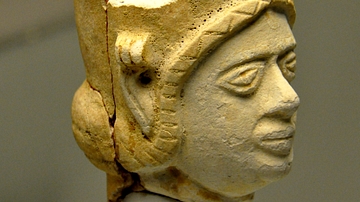
Image
Drinking Vessel From Ashur
This drinking vessel was made in the shape of an adult woman and was probably used for votive purposes. It was found at the temple of Ishtar at Ashur (Assur), the Assyrian capitals at that time. 1500-1200 BCE. Northern Mesopotamia, Iraq...
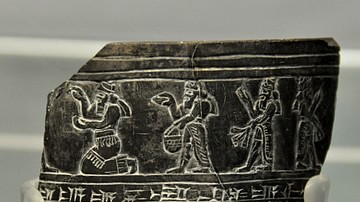
Image
Circular Stone Vessel From Tarbisu
A fragment of a circular stone vessel which was dedicated to the temple of God Nergal by a high official. The carved scenes in low relief depict the Assyrian king Shalmaneser III on his knees before a central object (lost), probably a sacred...
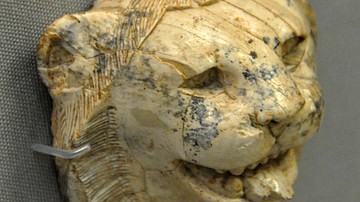
Image
Ivory Head of a Lion from Nimrud
Ivory head of a lion, part of the so-called "Nimrud Ivories" that decorated chariots, high-status furniture, and horse trappings. They were covered with thin gold leaf or ornamented with semiprecious stones. From Nimrud (ancient Kalhu) northern...
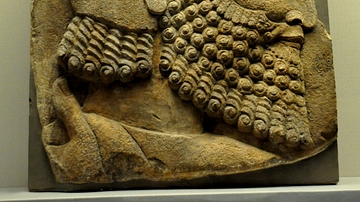
Image
Head of a Tribute Bearer from Khorsabad
This alabaster bas-relief shows a head of a bearded man. The fragment was part of a larger relief which depicts a procession of tribute bearers. The man's turban and his hair style and beard suggest that the man came from the western part...
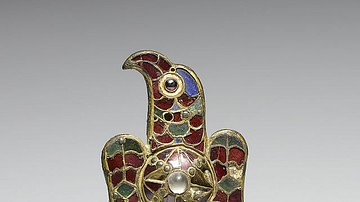
Image
Visigothic Fibula
This fibula (pin used for fastening a piece of clothing) is one of a pair made by a Visigothic artist out of gold over bronze with gemstones, glass and meerschaum. 6th century CE. Walters Art Museum, Baltimore, MD